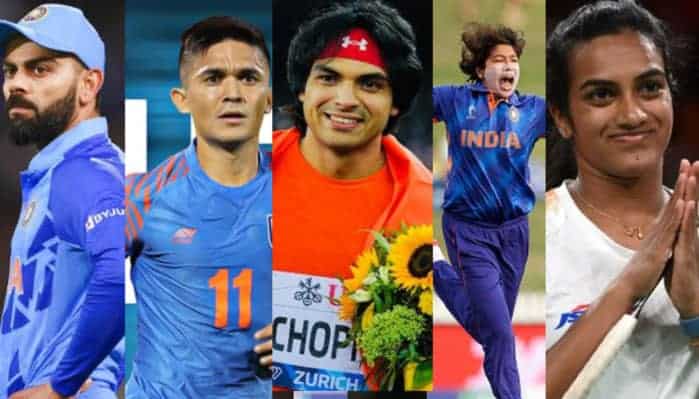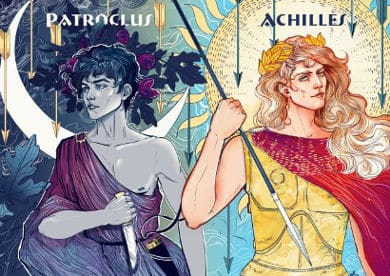From India’s cricket team with their legions of fans across the country to Barcelona’s Cules, sports have long been known to bring together some of the largest die-hard communities around the globe. So what happens when this fanaticism is left unchecked?
It was a warm night on 4th of September, 2022 at the Dubai International Stadium as India took on fierce rivals Pakistan in the Asia Cup. In the 18th over, Arshdeep Singh – a young and promising bowler who’d only made his India debut a couple of months ago – missed a vital catch. India was soon beaten by the neighbours and even though the 23 year old bowler’s final over was the reason the team still had a fighting chance at all, his fate was already sealed in the minds of most Indians across the country. In the days that followed, Arshdeep was subjected to a barrage of xenophobic comments all over social media dressed up as “criticism”. At one point, the bowler’s Wikipedia page was even edited to include references to Khalistan.
All this blind and raging hate to a young, bright star of the Indian national team for a dropped catch. This phenomenon isn’t new. Sporting events are incredibly huge and have some of the largest viewerships of any piece of entertainment in the world. With that kind of following, it is not strange to see that these communities attract all kinds of people – even the rotten apples. Where sports are seen as the peak of human ability, the communities they create often harbour the lowest cesspit of human morality.
The more alarming thing is the incredible scale and the normalisation of these regular campaigns of hate and character assassination. Arshdeep Singh is not the first and is likely not the last in a line of victims of sports fanaticism gone wrong. In 2021, Indian fast bowler, Mohammed Shami, was called a “traitor” and “Pakistani” following India’s defeat to Pakistan in a T20 match. In July 2021, some of England’s brightest young stars had racist abuses and bottles hurled at them after they missed the chance to score in a penalty shootout that could’ve won the country’s first trophy in 54 years. For most athletes, any faltered steps in their pursuits of perfection are an invitation for the bigoted cockroaches to come crawling out ready for a new day of insults, casual racism and death threats.
Quite possibly the most ironic part of this phenomenon is that sports thrive off of their ubiquity. They unite nations, states and even localities in their support for the best athletes that represent them competitively throughout history. Unfortunately, they just as easily unite the morally corrupt against an individual. Whether it’s the racist remarks hurled at opposition players in football leagues across Europe or the xenophobia hurled at their own team’s players for simple mistakes in India, it seems like stadiums are not temples dedicated to the game but instead, a safe space for bigotry and hate without consequences.
This fanaticism isn’t only an issue against athletes either. In 1985, during a final between Liverpool and Juventus, Liverpool fans started throwing projectiles at opposition fans who tried to climb the walls to escape the violence. The ensuing chaos couldn’t be handled by the ageing stadium and the stadium collapsed, killing 39 and injuring 600. More recently, in Turkey 2013, after a fierce derby was won by Fenerbahce over Galatasaray, a Fenerbahce fan was murdered by two Galatasaray fans as perceived “revenge”. India’s 2021 loss to Pakistan in a T20 tournament was followed by as many as 14 Kashmiri students beaten up across the country. It’s a tragedy that this incredible passion in the supporters can often hurt the supporters themselves.
Such violent events might lead one to wonder why anyone would want to be involved in such a violent (and sometimes, kind of stupid) phenomenon at all? The answer is, of course, community. Sports and their fan bases allow people to find like minded individuals. They create incredibly strong bonds over a competitive game and in a lot of instances, create a rivalry against other communities. As long as these rivalries stay within the rules of sportsmanship, they are incredible to be a part of. Fierce but friendly banter is exciting – it’s the subtle undertones of hate that tend to cause harm, especially in the hands of impassioned supporters.
One could argue that the reason behind such violent atmospheres surrounding sports and competition is that they are seen as an alternative to violence in the name of political, religious or communal agendas. India’s cricket matches against Pakistan are watched even by non cricket fans because of the significance and history of the rivalry between the two neighbours. In 1940s Spain, underdogs FC Barcelona were the symbol of a rising Catalonian rebellion against the draconian Franco dictatorship represented by Real Madrid. After all, you cannot legally hurt someone you don’t like or agree with, but you can definitely beat them on a grass pitch.
However, dear reader, a possibly even crazier phenomenon is that sports with its violent hatred and disregard for consequences is seen as the more respectable fandom to follow. Cosplaying as a Harry Potter character is weird or cringe, trying to act or dress like your favourite cricketer is totally normal – and in some instances, even cool. It is okay to be sad after your favourite club loses (And believe me, if you’re like me, that’s pretty regular) but stupid to be sad at the death of your favourite character. Perhaps it’s just blind ignorance to the preferences of others. Perhaps, it’s that sports are seen as a fan base that is made up of old uncles sharing a beer watching their matches on TV while books, movies and TV shows are seen as a fan base of teenage girls blogging on Tumblr. It is strange, this smear campaign against popular culture, when the more “respectable”, “acceptable” and normalised fanaticism is the one where stabbing someone or sending death threats is a perfectly acceptable reaction to loss.
In the end, though, sports will still garner their massive followings. PSG, a Paris based football club, reported revenues of 700 million euros last year. The BCCI has a net worth of 18000 crore rupees. The Dallas Cowboys in the NFL are worth 5.7 billion USD. These insane numbers are all due to their respective die-hard fan bases that are willing to do anything to showcase their support – in a mine-is-bigger way against the opposition. Why shouldn’t you support them? It’s good fun, great team building and an awesome feeling to cheer for your team against the opposition. Let’s just not go to war over it.
Read also: The Demise of Football
Image credits: ISRG
Siddharth Kumar



